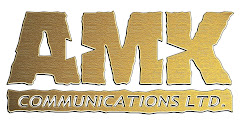A little known billboard advertising giant plots its digital future.
By
Richard Siklos, editor at large
(Fortune) -- Kevin Reilly Jr. chuckled when I described my ineptitude while recently trying to transfer photos onto a digital picture frame, which is supposed to display hundreds of rotating images. Let's just say that getting the digital frame to work is easier said than done, and I mentioned this to Reilly because he is attempting something similar on a vastly grander scale.
Reilly is the CEO of Lamar Advertising (LAMR), whose $3.5 billion market value is more than New York Times Company. But his company doesn't get a lot of ink, mostly because it operates in the least sexy quarter of the media whirl: billboards. While its two bigger rivals - Clear Channel (CCU, Fortune 500) and CBS Outdoor (CBS, Fortune 500) - are each linked to radio empires and tend to dominate big cities, Lamar has stuck to its original business and acquired more than 150,000 static billboards. It also puts posters on the sides of buses in the United States, Puerto Rico and Canada.
A few years ago, Reilly and his colleagues had an epiphany: Unlike other forms of media, the basic business of building walls on stilts and selling ads on them wasn't under direct threat from the Internet. If anything, technology could help billboard operators like Lamar save money. By using digital technology and broadband connections, Lamar could stitch together a network in which a single ad could be displayed at multiple locations. And as prices for next-generation screens fell, Reilly figured, any billboard could be turned into a veritable Jumbotron: like my digital picture frame, multiple images can be rotated across the screen.
more: http://money.cnn.com/2008/04/06/news/companies/siklos_lamar.fortune/index.htm?postversion=2008040707





